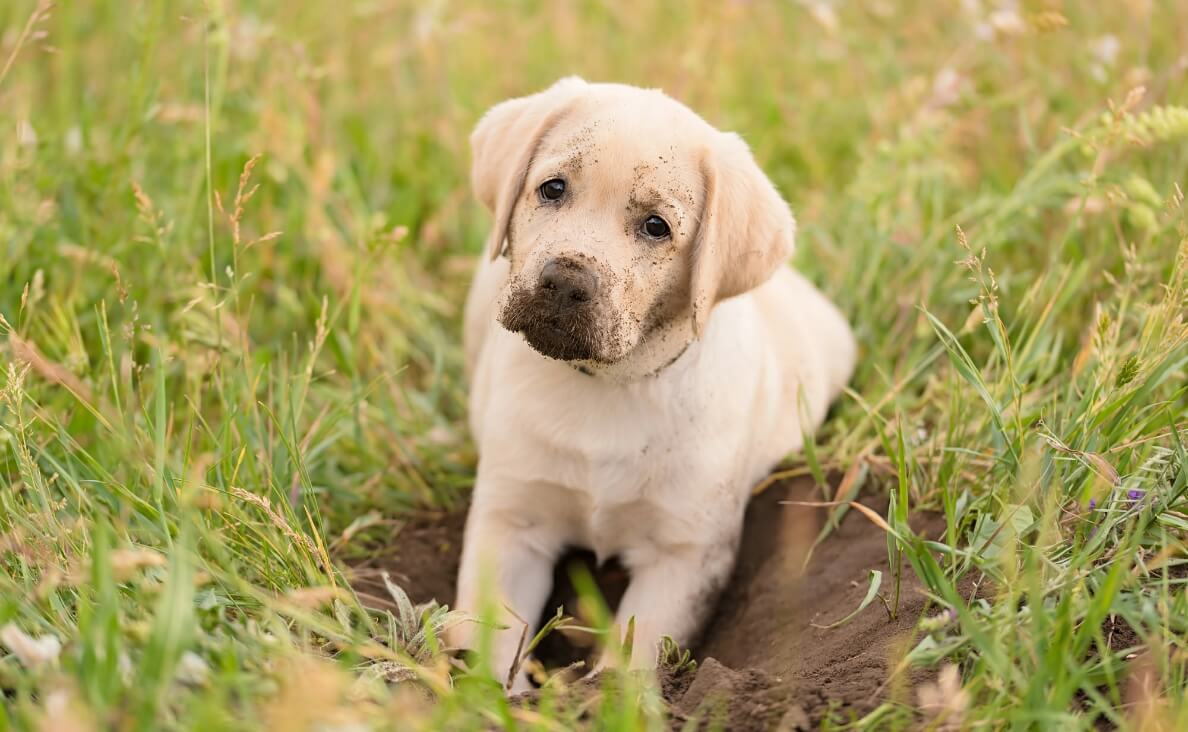
Dogs are curious by nature, and the outdoors is like a buffet—from fascinating scents to unexpected snacks. Some dogs explore their world by tasting dirt, leaves, or sticks. If you’ve ever asked yourself why do dogs eat dirt, you’re not alone. In this post, we’ll explore the top reasons behind this behavior, potential risks, and expert-backed strategies to keep your pup safe and healthy.
Section 1: Why Do Dogs Eat Dirt?
Why Do Dogs Eat Dirt? Nutritional, Behavioral & Medical Causes
Pica, the compulsion to eat non-food items, and its specific form geophagia (eating soil), may help explain why dogs sometimes seem drawn to dirt.
-
Nutritional Causes
- Dogs may seek out dirt for minerals like iron, sodium, or calcium if their diet is deficient.
- Low-quality or unbalanced homemade diets might not meet AAFCO or WSAVA standards, prompting scavenging behavior.
-
Behavioral Causes
- Boredom, lack of exercise, or anxiety—especially separation anxiety—can trigger dirt eating as a self-soothing activity.
- Puppies, in particular, love to explore with their mouths, making dirt or stick chewing a common behavior. Even adult dogs may use their mouths, paws, and bodies to investigate the world around them—sometimes by rolling in grass or nibbling on soil.
Related: Why Do Dogs Love Rolling in the Grass? 5 Surprising Reasons
-
Medical Causes
Certain underlying health conditions can cause dogs to eat dirt. These include:
- Anemia – a shortage of red blood cells, which may result from parasites, chronic disease, or nutritional deficiencies. Dogs with anemia may try to supplement missing nutrients by eating soil.
- Portosystemic (Liver) Shunt – an abnormal blood vessel that bypasses the liver, leading to toxin buildup and strange eating behaviors.
- Gastritis – inflammation of the stomach can cause nausea or stomach discomfort, prompting dogs to eat dirt in an attempt to feel better.
If your dog eats dirt regularly, especially along with symptoms like lethargy or appetite changes, it’s time to speak with your vet.
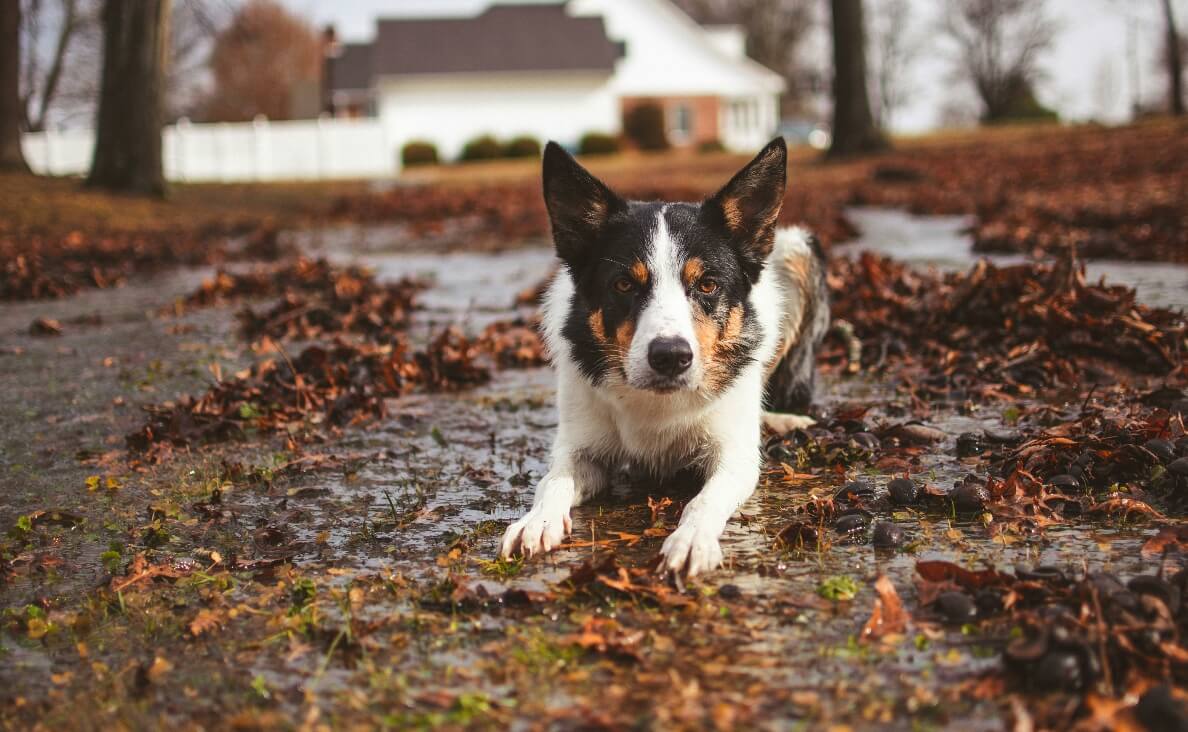
Section 2: Is Eating Dirt Dangerous for Dogs?
What Risks Come with Dirt-Eating?
Yes—eating dirt is dangerous for dogs. It may seem like a harmless habit, but it poses serious health risks you may not be aware of.
Immediate Physical Risks
- Choking hazard – Dirt clumps, mud, or mixed-in bones and rocks can become lodged in your dog’s throat.
- Broken teeth – Chewing on hard materials in soil can crack or fracture your dog’s teeth.
Gastrointestinal Obstruction
Foreign bodies like dirt, rocks, or sticks can get stuck in the esophagus, stomach, or intestines, causing an obstruction. This is a medical emergency that may require surgery.
Symptoms of an obstruction include:
- Gagging
- Coughing
- Regurgitation
- Abdominal pain
- Decreased appetite
- Vomiting food or water within minutes of eating or drinking
- Lethargy
If you see your dog ingest a large amount of dirt or a foreign object, call your vet or emergency animal hospital immediately. Vomiting may need to be induced—ideally within an hour—before the material moves into the intestines.
Toxins in Soil
Some dogs may accidentally ingest soil contaminated with pesticides, mulch, or other backyard hazards. To keep your dog safe, it’s important to identify what’s dangerous in your outdoor space.
Dirt may contain:
- Pesticides
- Fertilizers
- Toxic chemicals
These can cause severe reactions or poisoning. If you suspect your dog ingested dirt from a treated lawn or garden, call your vet or the Pet Poison Helpline at 855-764-7661 right away.
Related: 10 Life-Threatening Hazards for Dogs Lurking in Your Own Backyard
Parasites and Pathogens
Soil can harbor dangerous organisms like hookworms, roundworms, or bacteria such as Clostridium and E. coli that may make your dog very sick.

Section 3: Why Dogs Eat Leaves and Sticks
Why Do Dogs Eat Leaves and Sticks?
While the keyword focus is on why do dogs eat dirt, many dogs also chew or eat leaves and sticks. Here’s why:
- Dogs explore with their mouth—leaves and sticks provide new textures, smells, and tastes.
- Puppies may chew on sticks while teething.
- Some dogs eat leaves or sticks due to boredom, anxiety, or because they’ve seen other dogs do it.
Risks include:
- Choking
- Splinters and cuts to the mouth or throat
- Toxicity from poisonous plants
- Blockages in the digestive tract
Just like with dirt, these behaviors should be monitored and discouraged with safer alternatives.
Section 4: When Should You Worry—and Contact Your Vet
When to Be Concerned About Eating Non-Food Items
Call your vet if:
- The behavior is frequent or obsessive
- Your dog shows signs of illness such as:
- Vomiting
- Diarrhea
- Lethargy
- Pale gums
- Appetite loss
Your veterinarian may recommend tests such as:
- Complete Blood Count (CBC) to check for anemia
- Fecal exam to detect parasites
- Imaging (X-rays or ultrasound) to rule out obstructions
- Liver panel to screen for abnormalities like a portosystemic shunt
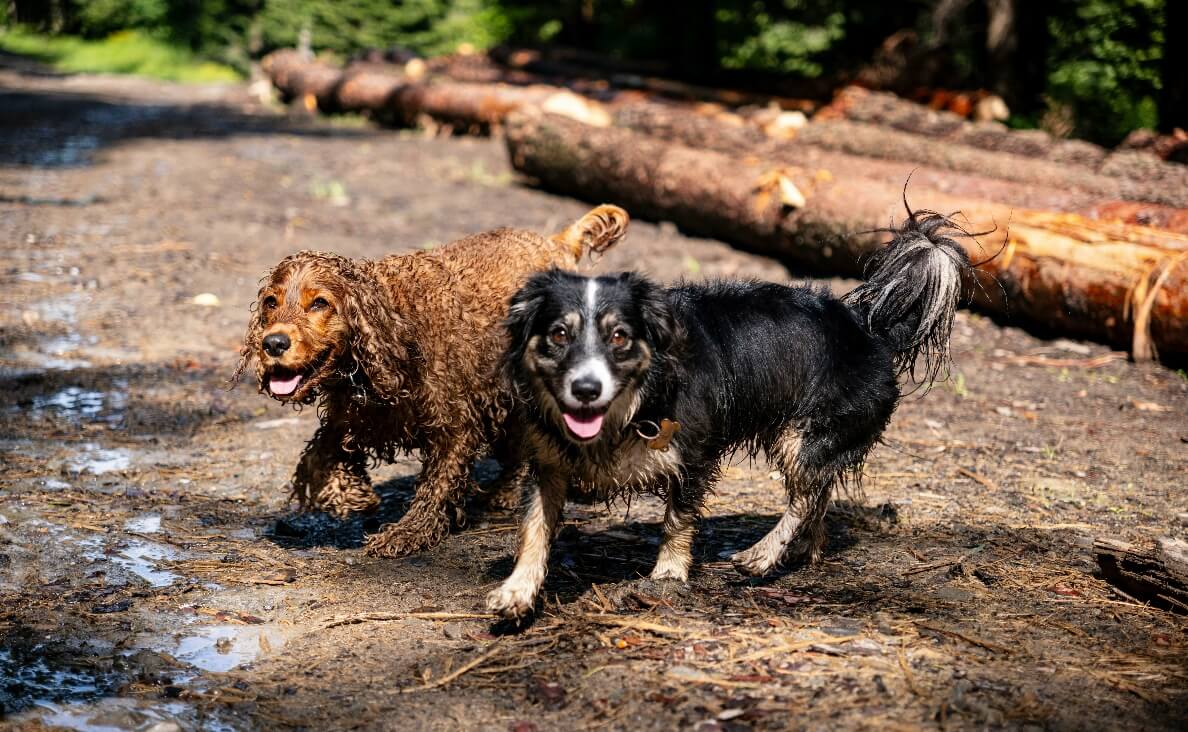
Section 5: What You Can Do to Help
How to Stop Your Dog From Eating Dirt, Leaves, and Sticks
Here are gentle, positive strategies to reduce or eliminate this behavior:
- Feed a balanced, high-quality diet – Ensure your dog’s food meets AAFCO standards and has no nutritional gaps that could prompt dirt eating.
- Enrich their day – Provide daily mental and physical stimulation: sniff walks, puzzle feeders, and interactive toys help relieve boredom and anxiety.
- Supervise outdoor time – Keep your dog on leash during walks and watch closely in your yard so you can gently redirect them before they eat something unsafe.
- Redirect with training – Use a firm but kind cue like “leave it” and offer a treat or toy instead when your dog starts to nibble at dirt, leaves, or sticks.
- Dog-proof your yard – Fence off areas with mulch, compost, or exposed soil. Remove tempting debris like twigs or dead plants.
- Consult a professional – If the behavior persists or becomes compulsive, talk to your vet or a certified dog behaviorist to rule out medical issues and get expert guidance.
Related: 15 DIY Dog Yard Ideas for a Fun and Safe Outdoor Space
Final Thoughts
To wrap up, asking why do dogs eat dirt is more than curiosity—it’s an important question for your dog’s health. Sometimes, it’s normal exploratory behavior. But in other cases, it may point to nutritional issues, anxiety, or underlying illness. Dirt-eating also poses serious risks like choking, poisoning, and intestinal blockages.
Understanding the “why” behind this habit can help you take meaningful steps to protect your dog. When in doubt, always talk to your veterinarian.
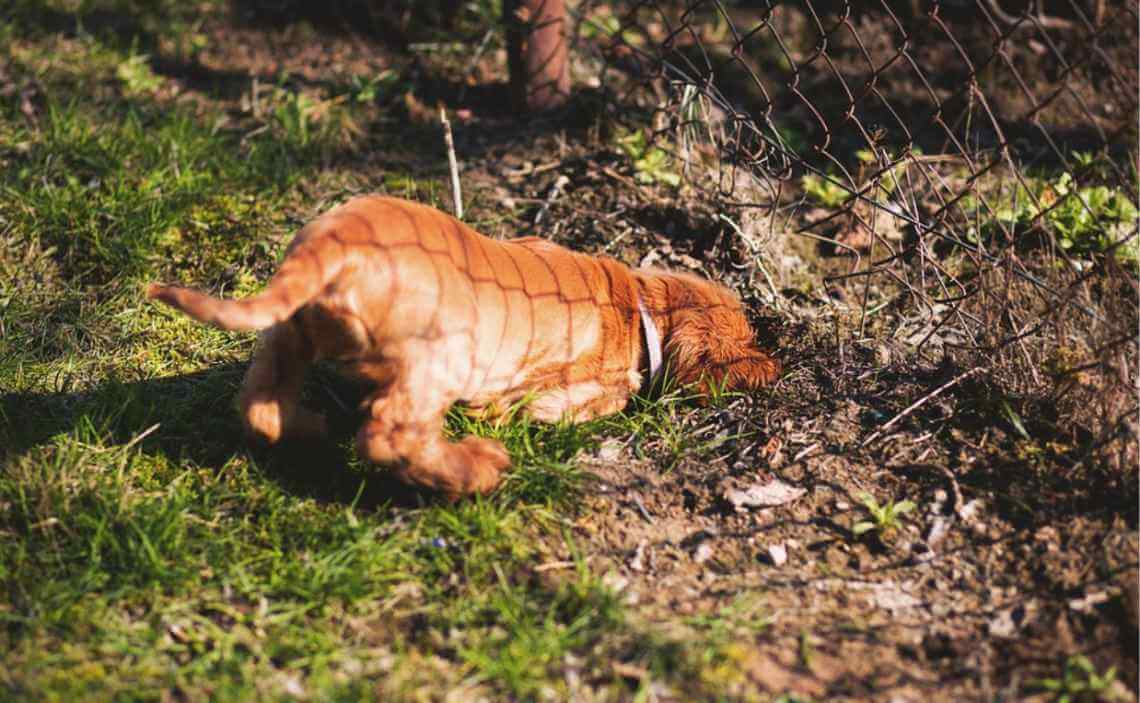
Audience Engagement Question
Does your dog eat dirt, leaves, or sticks? What helped you stop the behavior—or are you still working on it? Share your experience in the comments below! 🐶👇
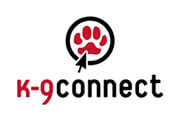
 National Pet Fire Safety Prevention Day
National Pet Fire Safety Prevention Day Common Sense and a Little Extra Care for the Dog Days of Summer
Common Sense and a Little Extra Care for the Dog Days of Summer Driving Instead of Flying? Holiday Travel with Your Dog
Driving Instead of Flying? Holiday Travel with Your Dog 8 Tips for Choosing Safe Chews for Your Dog
8 Tips for Choosing Safe Chews for Your Dog Have a Heart for Chained Dogs Week
Have a Heart for Chained Dogs Week






My neighbor has a King Charles that eats roof shingles and bites if she dies to take it away. Unfortunately, the prior owner used them for weed control and they are buried everywhere. Do you have an answer for why?
Thank you for sharing that — what a concerning and difficult situation for your neighbor! It sounds especially challenging since those roof shingles are buried everywhere, making it hard to keep the dog from finding them.
Dogs who eat unusual objects like shingles may be showing signs of pica, a condition where pets crave and eat non-food items. This can happen for several reasons — including nutritional deficiencies, boredom, anxiety, or an underlying medical issue. Sometimes, dogs are simply drawn to the smell or texture of materials like tar or minerals in shingles.
Because eating shingles can be dangerous, it’s really important for your neighbor to contact their veterinarian for an evaluation. The vet can check for possible deficiencies or medical causes and recommend safe strategies to prevent access to the buried shingles.
If the dog becomes aggressive when someone tries to take something away, it’s best not to force it. A certified trainer or behaviorist can help teach safe “drop it” or trade techniques to reduce risk.
We hope your neighbor can get some expert help soon — that’s a tough situation, but with guidance from a vet and behavior professional, it can definitely improve.